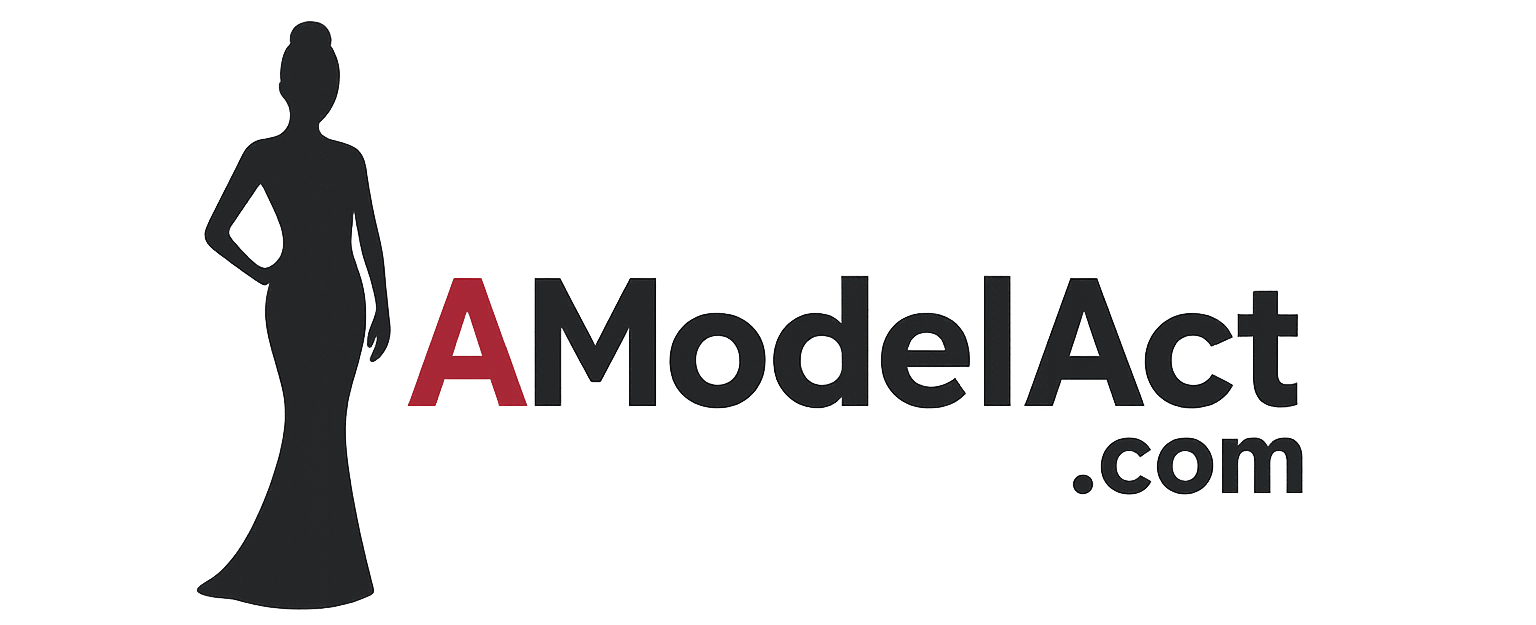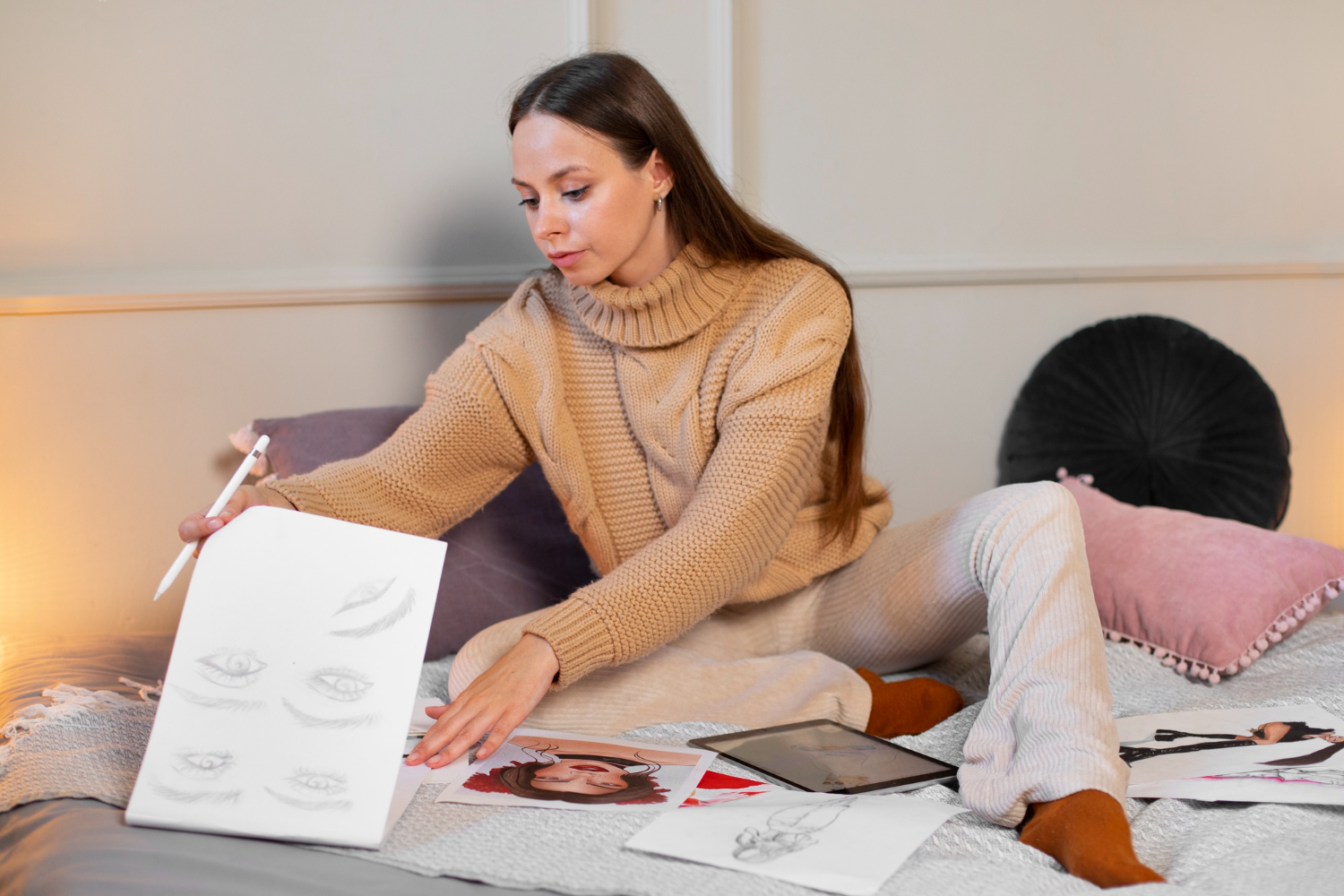Style has a powerful impact on how I present myself as a model. It’s more than what I wear, style is how I communicate my identity, versatility, and potential to agencies and clients. When I think about building or updating my portfolio, I don’t only focus on the lighting, poses, or makeup. I consider how each outfit, texture, and silhouette enhances my image. The role of style in your modeling portfolio can’t be underestimated. It’s what ties a shoot together and makes the photos feel intentional, polished, and memorable.
Expressing Identity Through Fashion
Every model brings something unique to the table, and style is one of the best ways to show that. In my portfolio, I aim to include looks that reflect my personality while still leaving room for interpretation. Clients want to see how I can be shaped into their vision, but they also want to see who I am at the core.
Style helps me find that balance. A clean, minimal look might highlight my poise and elegance, while an edgier streetwear outfit could show a more dynamic, bold side. I treat each style choice as a visual message. It allows agencies to get a sense of what I naturally gravitate toward and how I might fit into different markets, commercial, editorial, lifestyle, or high fashion.
Outfits That Reflect Versatility
A strong modeling portfolio needs range. It’s one thing to have great photos, but I’ve found that having great variety in those photos matters more. The role of style in your modeling portfolio is critical when showing how adaptable you are in front of the camera.
I make sure to include a mix of casual, formal, editorial, and experimental styles. For instance, one image might feature me in a classic jeans-and-white-tee look to highlight a commercial vibe. Another could have me in a sleek black jumpsuit, giving off a more high-fashion, runway-ready feel.
The goal is to show that I can step into different roles with ease. Each style I wear adds a new layer to my story and creates visual interest throughout the portfolio. Without variety in style, even the most well-shot portfolio can fall flat.
Telling a Visual Story
A portfolio isn’t just a collection of images. It’s a narrative, and the clothes I wear play a huge part in shaping that story. I think about the order of images, how one look flows into the next, and what the overall mood feels like when someone flips through my book or scrolls through my digital gallery.
Outfits help establish tone. A soft, ethereal dress can create a romantic or dreamy vibe, while sharp tailoring or leather adds edge and modernity. When I plan a shoot, I coordinate wardrobe choices to fit the concept or desired emotional tone. That way, each photo builds on the last and contributes to a cohesive narrative.
This is why the role of style in your modeling portfolio extends beyond aesthetics, it becomes a storytelling device. The more thought I put into how my wardrobe supports the message, the more compelling my portfolio becomes.
Working With Stylists or Styling Yourself
On some shoots, I’ve been lucky to work with stylists who elevate the concept with their selections. They bring expertise in how clothes drape, photograph, and reflect current trends. When I collaborate with a good stylist, the images always feel sharper and more editorial.
But I’ve also styled many shoots myself. In those cases, I treat it as a creative challenge. I pick pieces that suit the lighting, location, and goal of the shoot. I consider fabric movement, color palettes, and how the outfit shapes my silhouette. Even when I’m working with a limited wardrobe, I mix layers, accessories, and poses to give a single outfit multiple interpretations.
The ability to style myself well is a skill I constantly refine. It helps me stay ready for last-minute test shoots, personal branding sessions, or agency updates. When I know how to use style to bring out my best, I stay in control of my image.
Adapting Style for Different Markets
Not every market values the same look. What works in New York might not translate to Milan or Tokyo. The role of style in your modeling portfolio becomes even more strategic when trying to appeal to different parts of the industry.
In commercial markets, I focus on clean, relatable looks that make me look approachable and versatile, like lifestyle jeans, neutral tops, and soft outerwear. For fashion-forward editorial markets, I lean into avant-garde or statement pieces that show I can handle more complex visuals. I adapt my wardrobe depending on which agencies or clients I’m targeting.
This awareness allows me to customize my portfolio sections if needed. Having digital folders or PDF portfolios for different markets, each with tailored style choices, helps ensure that I’m presenting the best version of myself for each opportunity.
Color, Texture, and Silhouette in Style Selection
When I plan a shoot or select images for my portfolio, I pay attention to how color and texture affect the overall feel. Soft pastels can create a dreamy, innocent tone. Monochromatic black might express power and elegance. Bold primary colors stand out, especially in editorial spreads.
Textures like denim, silk, wool, or leather all photograph differently. A leather jacket adds instant drama and contrast. Sheer fabric offers softness and movement. I experiment with combinations that work with my skin tone, body type, and energy.
Silhouette also plays a huge role. Fitted looks help highlight my figure and bone structure, while looser, fluid pieces allow me to play with form and shape in poses. I make sure to mix silhouettes throughout my portfolio, body-hugging, oversized, tailored, layered, so that clients can see different dimensions of my look.
Accessories and Styling Details That Add Depth
While the focus of a portfolio should remain on the model, accessories can help elevate certain images when used intentionally. A wide-brimmed hat, statement earrings, or structured belt can create visual interest and define a particular style.
But I don’t overload. I’ve found that using accessories as accent pieces rather than focal points keeps the attention on me. One or two well-chosen items can support the aesthetic without competing with it.
Shoes, bags, sunglasses, and jewelry are part of the style equation, but they must serve the overall vision. I always ask myself: Is this adding to the story? Or distracting from it? If I’m unsure, I keep the look cleaner and simpler.
Coordinating Style With Hair and Makeup
The role of style in your modeling portfolio works in harmony with hair and makeup. A glamorous outfit demands polish, sleek hair, bold lips, or defined eyes. A relaxed, beachy outfit looks better with minimal makeup and tousled waves. I think of hair and makeup as extensions of my clothing choices. They need to sync for the full image to work.
When planning multiple looks for one shoot, I often start with the simplest style and build from there. That way, hair and makeup transitions feel smooth, and the style evolution looks natural throughout the portfolio.
Even slight changes, like a bun versus loose hair, or glossy lips instead of matte, can alter how the outfit comes across. That’s why planning the shoot sequence and styling transitions is part of my pre-shoot prep.
Consistency Versus Repetition
Consistency in style helps create a cohesive portfolio, but I stay careful not to become repetitive. If every look feels the same, my images lose impact. At the same time, I don’t want my portfolio to feel like a random collection of outfits that don’t represent my brand.
The solution is to build around a style identity. I think of my core look, whether that’s elegant, edgy, minimal, or fresh, and then explore different branches of it. Each outfit should reflect that identity while offering something new. That way, my portfolio feels both connected and surprising.
The role of style in your modeling portfolio means building visual rhythm. Each image should add a beat without losing the tone. That’s what makes a portfolio memorable and engaging.
Updating Your Portfolio With New Style Concepts
Stale portfolios don’t book jobs. I try to refresh my book every few months with new looks or concepts. Even one or two new outfits can breathe life into an existing collection of images. I experiment with trends cautiously, incorporating a trendy accessory or piece if it aligns with my brand, but not letting it dominate.
Before every shoot, I brainstorm how the style will add value to my portfolio. I ask myself: Does this look fill a gap? Show a different side of me? Highlight a part of my range I haven’t covered? If the answer is yes, I move forward. If it feels like repetition, I refine the idea.
Collaboration and Creative Direction
Style isn’t only about the clothes I bring, it’s also about how I collaborate with photographers, stylists, and creative directors. When we’re on the same page, the style reflects a shared vision, and the shoot comes alive. I bring my own ideas to the table but stay open to input.
If the team has a concept that’s outside my usual range, I view it as a chance to stretch my style boundaries. Some of my strongest portfolio images came from trusting the creative process and stepping into looks I wouldn’t have chosen on my own.
These collaborative moments underscore the importance of style as a tool, not just to look good, but to transform in front of the camera.
Conclusion
The role of style in your modeling portfolio is more than fabric and fashion, it’s about building a story, expressing your versatility, and shaping how the industry sees you. Every outfit is a brushstroke in the picture I paint for agencies, casting directors, and brands.
When I approach my wardrobe with intention, coordinate with the shoot concept, and use style to amplify rather than overshadow, my portfolio becomes a powerful tool. It speaks even when I’m not in the room. Through style, I show who I am, who I can become, and why I’m worth remembering.

